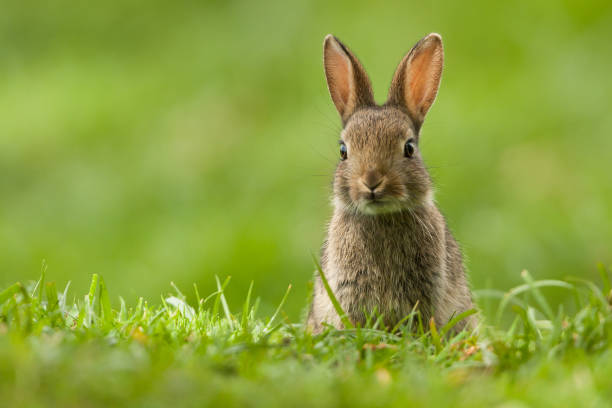Table of Contents
Scientific Classification
| Kingdom | Animalia |
| Phylum | Chordata |
| Class | Mammalia |
| Order | Lagomorpha |
| Family | Leporidae |
| Genus | Oryctolagus |
| Species | Oryctolagus cuniculus |
| Scientific Name | Oryctolagus cuniculus |
1. Description
The European rabbit is a small, burrowing mammal known for its compact body, long ears, and strong hind legs. On average, adults grow to about 40 cm in length and weigh between 1.2 to 2.0 kg. Their fur typically has a greyish-brown hue, but it can vary based on domestication and environmental factors. One of their most distinctive features is their large ears, which can reach up to 7.5 cm. These ears play a crucial role in helping them regulate their body temperature and detect predators.
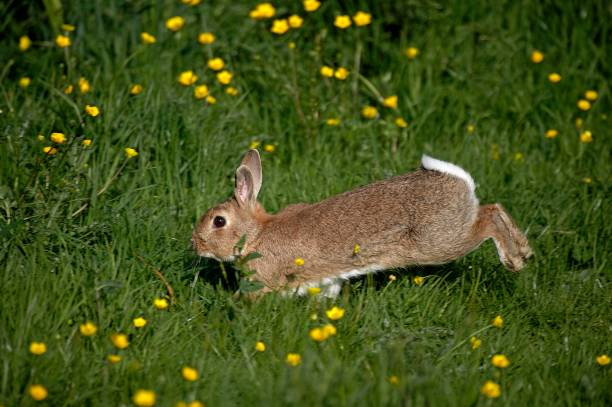
2. Distribution
The European rabbit hails from the Iberian Peninsula and northwestern Africa. Over time, it has made its way to various regions, including Australia, New Zealand, and the Americas. In places like Australia, these rabbits have turned into an invasive species, leading to significant ecological issues. They breed rapidly and have very few natural predators, which only exacerbates the problem.
3. Habitat
European rabbits are drawn to areas with rich soil that’s perfect for digging. They typically prefer grasslands, meadows, and open woodlands. These bunnies like to settle in spots with plenty of ground cover, which gives them a safe haven from predators. Their warren burrow systems are often found on slopes or banks, a choice that aids in drainage.
4. Diet
When it comes to their diet, European rabbits are true herbivores. They mainly munch on grasses, herbs, and leafy weeds. If they can find them, they’ll also nibble on bark, twigs, and even some cultivated crops. Their digestive system is quite efficient at pulling out the nutrients they need. Interestingly, they practice something called coprophagy, which means they eat their soft fecal pellets again to get even more nutrients.
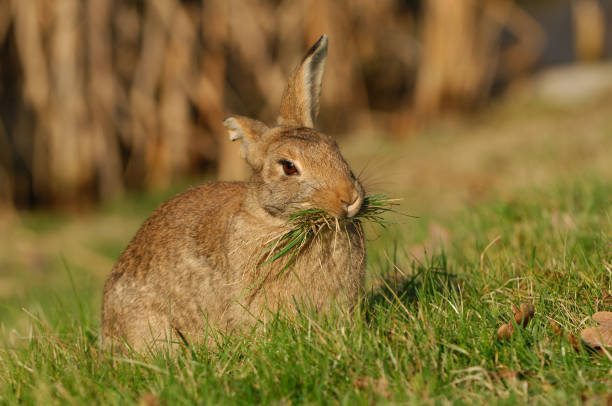
5. Behavior
European rabbits are quite the social creatures, often found living in groups that create intricate burrow systems. They tend to be most active during the early morning and late evening, a behavior known as being crepuscular. When it comes to communication, they have some interesting methods—like thumping their hind legs to signal danger and letting out high-pitched screams when they’re frightened.
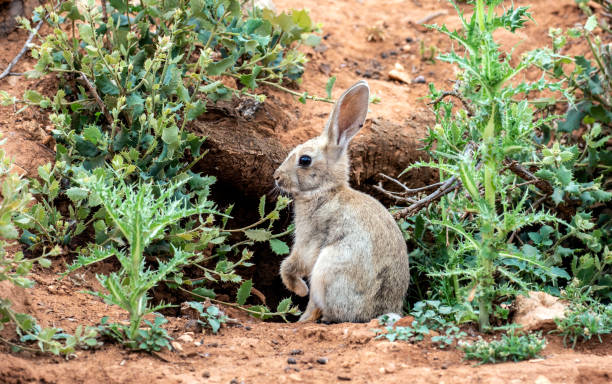
6. Lifespan
In the wild, European rabbits typically have a lifespan of about 9 years. Unfortunately, many of them don’t make it that long due to predators, diseases, and various environmental challenges. However, when they’re kept in captivity and given the right care, they can live much longer—sometimes even up to 12 years!
7. Reproduction and Lifecycle
European rabbits have a high reproductive rate. Females (does) can produce multiple litters per year, each consisting of 3 to 7 kits. The gestation period is approximately 30 days. Kits are born blind and hairless, gaining sight around 10 days old and weaning at about 4 weeks. Sexual maturity is reached at 3 to 5 months.
8. Predators
Predators have a significant impact on European rabbits, which find themselves on the menu for a variety of animals. Foxes, birds of prey, and mustelids are just a few of the hunters that target them. In their natural environment, these rabbits play a crucial role as a food source for larger predators like the Iberian lynx and the Spanish imperial eagle. However, when they move to new areas where natural predators are absent, their populations can explode rapidly.
9. Adaptations
Adaptations are fascinating! They have powerful hind legs that allow for quick escapes, sharp hearing and eyesight to spot predators, and a high reproductive rate to keep their numbers up despite losses. Their burrowing behavior not only provides shelter but also keeps them safe. Plus, their social structure plays a crucial role in their survival.
10. Nest
Does prepare nests called “stops” for their young, often separate from the main warren. These nests are lined with fur and vegetation to keep the kits warm and concealed. After nursing, the doe seals the entrance to protect the offspring.
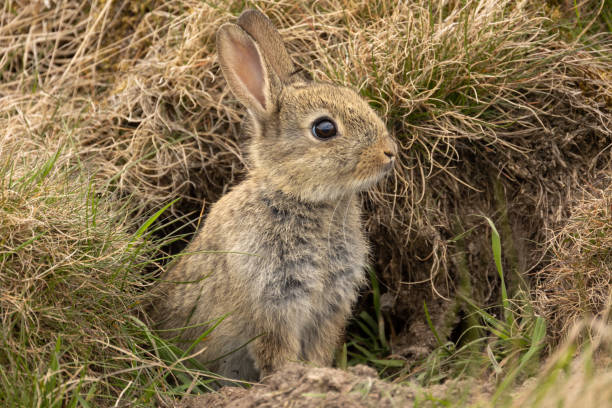
11. Mating Season
Breeding can happen all year in good climates. However, it usually peaks in spring and summer. Environmental factors like temperature and food availability influence breeding cycles.
12. Breeding
European rabbits are induced ovulators, meaning ovulation occurs due to mating. This trait, along with their short gestation and quick ability to conceive after giving birth, helps their population grow quickly.
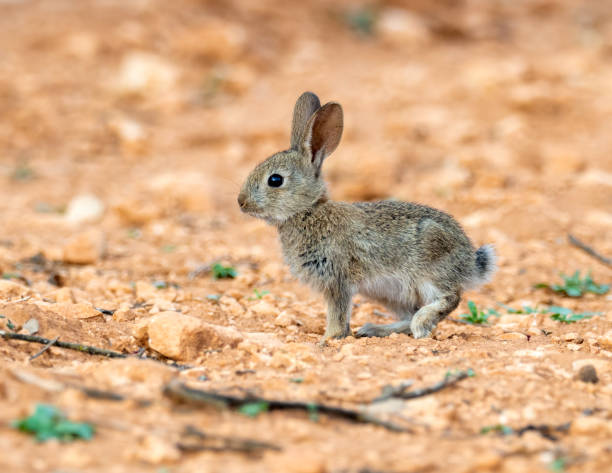
13. Interesting Facts
- Did you know that European rabbits are the only ones that have really taken to domestication? Because of this, we’ve seen a variety of breeds emerge, whether for meat, fur, or just as adorable pets.
- Back in the 19th century, rabbits made their way to Australia, and let’s just say it didn’t go too well for the local ecosystem. To tackle the issue, they had to get creative with solutions like building rabbit-proof fences.
- These little creatures play a vital role in their ecosystems, providing support for a range of predator species.
14. Conservation Status
The European rabbit is “Near Threatened” on the IUCN Red List. Its numbers are dropping in its native area. This drop mainly results from disease outbreaks like myxomatosis and rabbit hemorrhagic disease. Other factors include habitat loss and overhunting.
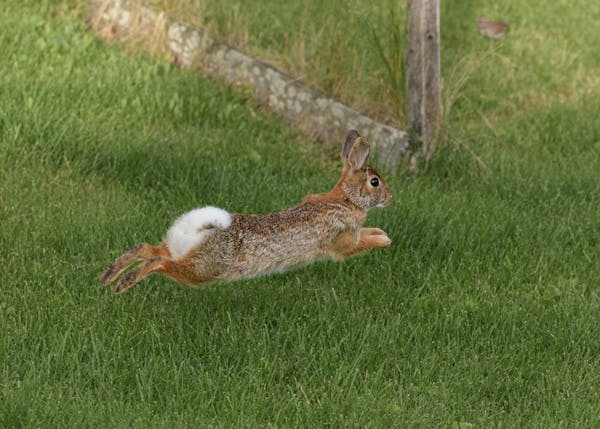
References:
https://en.wikipedia.org/wiki/Rabbit
https://en.wikipedia.org/wiki/European_rabbit

